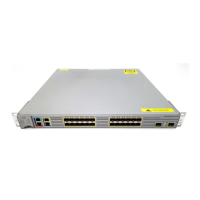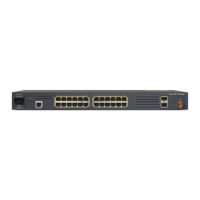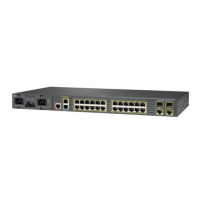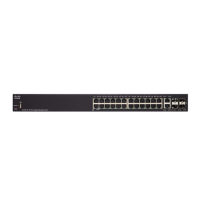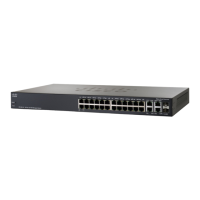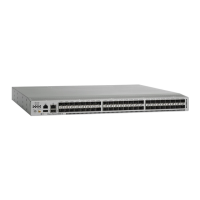29-34
Cisco ME 3800X and 3600X Switch Software Configuration Guide
OL-23400-01
Chapter 29 Configuring IP Unicast Routing
Configuring EIGRP
EIGRP has these four basic components:
• Neighbor discovery and recovery is the process that routers use to dynamically learn of other routers
on their directly attached networks. Routers must also discover when their neighbors become
unreachable or inoperative. Neighbor discovery and recovery is achieved by periodically sending
small hello packets. As long as hello packets are received, the neighbor is alive and functioning.
When this status is determined, the neighboring routers exchange routing information.
• The reliable transport protocol is responsible for guaranteed, ordered delivery of EIGRP packets to
all neighbors. It supports intermixed transmission of multicast and unicast packets. Some EIGRP
packets must be sent reliably, and others need not be. For efficiency, reliability is provided only
when necessary. For example, on a multiaccess network that has multicast capabilities, it is not
necessary to send hellos reliably to all neighbors individually. Therefore, EIGRP sends a single
multicast hello with an indication in the packet informing the receivers that the packet need not be
acknowledged. Other types of packets (such as updates) require acknowledgment, which is shown
in the packet. To ensure low convergence time, the reliable transport sends multicast packets quickly
when there are unacknowledged packets pending.
• The DUAL finite state machine handles the decision process for all route computations. It tracks all
routes advertised by all neighbors and uses the distance information (known as a metric) to select
efficient, loop-free paths. DUAL selects routes to be inserted into a routing table based on feasible
successors. A successor is a neighboring router used for packet forwarding that has a least-cost path
to a destination that is guaranteed not to be part of a routing loop.
When there are no feasible successors, but there are neighbors advertising the destination, a
recomputation must occur to determine a new successor. The amount of time it takes to recompute
the route affects the convergence time. When a topology change occurs, DUAL tests for feasible
successors to avoid unnecessary recomputation.
• The protocol-dependent modules are responsible for network layer protocol-specific tasks. An
example is the IP EIGRP module, which is responsible for sending and receiving EIGRP packets
that are encapsulated in IP. It is also responsible for parsing EIGRP packets and informing DUAL
of the new information received. Routing decisions are stored in the IP routing table. EIGRP also
redistributes routes learned by other IP routing protocols.
These sections contain this configuration information:
• Default EIGRP Configuration, page 29-35
• Configuring Basic EIGRP Parameters, page 29-36
• Configuring EIGRP Interfaces, page 29-37
• Configuring EIGRP Route Authentication, page 29-38
• Configuring EIGRP Stub Routing, page 29-39
• Monitoring and Maintaining EIGRP, page 29-40
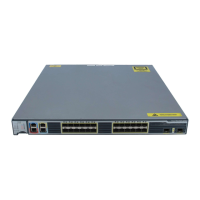
